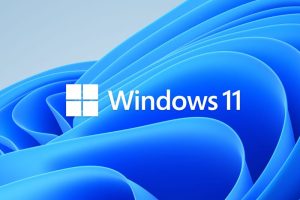After months of silence about Apple’s impressive M1 chip, Intel just clapped back with a carefully crafted takedown of the Arm-based chip. The company said their testings showed several important issues.
In November, Intel did the same with AMD’s Ryzen 4000, which is found to suffer degraded performance when running on battery in many situations.
The normal reaction from outside observers is to dismiss these challenges as sour grapes, however, The PCWorld detailed Intel’s claims to show whether to believe them or not.
- Claim: MacBook M1 is slower than Core i7
Intel says in the WebXPRT 3 test, using the same version of Chrome for both the Core i7 system as well as the Arm-native MacBook, Intel takes the lead. The Intel chip was largely ahead in WebXPRT 3, and the x86 chip was nearly three times faster in finishing the photo enhancement test. Intel doesn’t just use WebXPRT 3, though. It also shows the Core i7 pummeling the M1 in a PowerPoint-to-PDF export, and multiple Excelmacros by a factor of 2.3x.
The PCWorld don’t doubt this results, however, they questioned whether Intel picked tasks that favour its own CPU design. They also pointed out that WebXPRT 3 gives a home-field advantage to Intel, as the benchmark developer (Principled Technologies) and Intel have long had a relationship.
- Claim: Core i7 Crushes M1 in AI
Intel showed the Core i7 to be about 1.12x faster than the M1 in performing a 4K AVC-to-HEVC/H.265 file conversion for content-creation tasks. In this benchmark, they had the MacBook using the M1-native version of Handbrake. But the real destruction happens once you get to Topaz Lab’s Gigapixel AI and Denoise AI, with the Intel Core chip crushing the M1 in AI-based noise removal and enlargement.
The PC World stated that as far as the video conversion goes, it’s too close to call between both platforms, however, on the AI features, the results are pretty real because the PCWorld team have witnessed it with their own M1 vs Core i7 and Ryzen tests. They pointed out that Topaz Lab’s apps are among the few apps that were designed to take advantage of the hardware acceleration inside of Intel’s CPUs.
- Claim: M1 does not support all the features
Intel gives itself the lead in Adobe Premiere Pro, using the beta M1 native version in Auto Reframe, exporting to H.264 and H.265. They’re decent wins, but the code is still in beta for the Mac. That said, Intel points out that important features like Content-Aware Fill are outright disabled on the beta version, and that’s a concern.
- Claim: MacBook wouldn’t win Evo certification
Intel Evo program tries to improve laptop performance in key areas that annoy consumers. However, Intel says that if Apple submitted the M1 MacBook to the same program that Asus, Dell, HP, Lenovo, MSI, Acer and others go through, it would be rejected. The reason is that Intel says the M1 MacBook is too slow in doing things that anger consumers, such as “switch to Calendar” in Outlook, “start video conference Zoom”, etc.
So while Intel might think it’s an insult to Apple to deny Evo certification, The PCWorld suspect Apple won’t care about one less badge on its laptops.
- Gaming: You can’t be faster if you can’t run it
Intel decides to embarrass Apple further by showing the numerous games where the MacBook scores a 0 because game support just doesn’t exist. Intel points out that “countless more” games “don’t run on the M1,” and then it rushes Apple’s bench with a list of 10 more games you can’t play on the M1 MacBook.
The PCWorld supported this claim by saying: “for gaming, the M1 Mac is actually about 10 feet below inferior as a gaming platform compared to the PC.”
- Great battery life?
Intel pitted a MacBook Air M1 against an Acer Swift 5 with a Core i7-1165G7, it found both basically dead even. The MacBook Air came in at 10 hours and 12 minutes, and the Acer Swift 5 lasted 10 hours and 6 minutes. The difference is that Intel said it used Safari to watch a Netflix stream with tabs open to a relatively bright 250 nits. On the Acer, Safari was subbed out for Chrome, but the brightness and Netflix remained the same. The PCWorld noted that they will do initial testing related to this topic on their own.
The fact that the MacBook can only use a single external display is a serious weakness in this multi-monitor world. Hopefully, it’s just a bug from the new platform, but for all we know, it’s a limitation of the hardware too.
One detail Intel didn’t cover is acoustics. One of the singular amazing features of the new MacBook M1’s is the near lack of fan noise, but every review has properly praised Apple’s dead silent operation.
One thing we know for sure is that the PCWorld will certainly test out some of Intel’s more serious hardware compatibility and battery life claims, hence conclusions are yet to be drawn.








